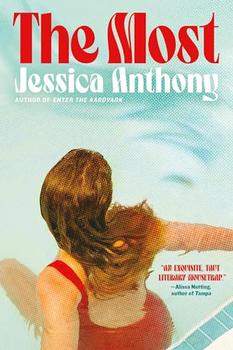Summary | Excerpt | Reviews | Readalikes | Genres & Themes | Author Bio

The Life of Mathematical Genius and Nobel Laureate John Nash
by Sylvia Nasar
The young Nash had wholly different instincts. Where von Neumann's focus was
the group, Nash zeroed in on the individual, and by doing so, made game theory
relevant to modern economics. In his slender twenty-seven-page doctoral thesis,
written when he was twenty-one, Nash created a theory for games in which there
was a possibility of mutual gain, inventing a concept that let one cut through
the endless chain of reasoning, "I think that you think that I
think...." His insight was that the game would be solved when every player
independently chose his best response to the other players' best strategies.
Thus, a young man seemingly so out of touch with other people's emotions, not
to mention his own, could see clearly that the most human of motives and
behavior is as much of a mystery as mathematics itself, that world of ideal
platonic forms invented by the human species seemingly by pure introspection
(and yet somehow linked to the grossest and most mundane aspects of nature). But
Nash had grown up in a boom town in the Appalachian foothills where fortunes
were made from the roaring, raw businesses of rails, coal, scrap metal, and
electric power. Individual rationality and self-interest, not common agreement
on some collective good, seemed sufficient to create a tolerable order. The leap
was a short one, from his observations of his hometown to his focus on the
logical strategy necessary for the individual to maximize his own advantage and
minimize his disadvantages. The Nash equilibrium, once it is explained, sounds
obvious, but by formulating the problem of economic competition in the why that
he did, Nash showed that a decentralized decision making process could, in fact,
be coherent -- giving economics an updated, far more sophisticated version of
Adam Smith's great metaphor of the Invisible Hand.
By his late twenties, Nash's insights and discoveries had won him recognition,
respect, and autonomy. He had carved out a brilliant career at the apex of the
mathematics profession, traveled, lectured, taught, met the most famous
mathematicians of his day, and become famous himself. His genius also won him
love. He had married a beautiful young physics student who adored him, and
fathered a child. It was a brilliant strategy, this genius, this life. A
seemingly perfect adaptation.
Many great scientists and philosophers, among them René Descartes, Ludwig
Wittgenstein, Immanuel Kant, Thorstein Veblen, Isaac Newton, and Albert
Einstein, have had similarly strange and solitary personalities. An emotionally
detached, inward-looking temperament can be especially conducive to scientific
creativity, psychiatrists and biographers have long observed, just as fiery
fluctuations in mood may sometimes be linked to artistic expression. In The
Dynamics of Creation, Anthony Storr, the British psychiatrist, contends that
an individual who "fears love almost as much as he fears hatred" may
turn to creative activity not only out of an impulse to experience aesthetic
pleasure, or the delight of exercising an active mind, but also to defend
himself against anxiety stimulated by conflicting demands for detachment and
human contact. In the same vein, Jean-Paul Sartre, the French philosopher and
writer, called genius "the brilliant invention of someone who is looking
for a way out." Posing the question of why people often are willing to
endure frustration and misery in order to create something, even in the absence
of large rewards, Storr speculates:
Some creative people...of predominately schizoid or depressive temperaments...use their creative capacities in a defensive way. If creative work protects a man from mental illness, it is small wonder that he pursues it with avidity. The schizoid state...is characterized by a sense of meaninglessness and futility. For most people, interaction with others provides most of what they require to find meaning and significance in life. For the schizoid person, however, this is not the case. Creative activity is a particularly apt way to express himself...the activity is solitary...[but] the ability to create and the productions which result from such ability are generally regarded as possessing value by our society.
Of course, very few people who exhibit "a lifelong pattern of social
isolation" and "indifference to the attitudes and feelings of
others" -- the hallmarks of a so-called schizoid personality -- possess
great scientific or other creative talent. And the vast majority of people with
such strange and solitary temperaments never succumb to severe mental illness.
Instead, according to John G. Gunderson, a psychiatrist at Harvard, they tend
"to engage in solitary activities which often involve mechanical,
scientific, futuristic and other non-human subjects...[and] are likely to appear
increasingly comfortable over a period of time by forming a stable but distant
network of relationships with people around work tasks." Men of scientific
genius, however eccentric, rarely become truly insane -- the strongest evidence
for the potentially protective nature of creativity.
Copyright © 1998 by Sylvia Nasar.




Your guide toexceptional books
BookBrowse seeks out and recommends the best in contemporary fiction and nonfiction—books that not only engage and entertain but also deepen our understanding of ourselves and the world around us.